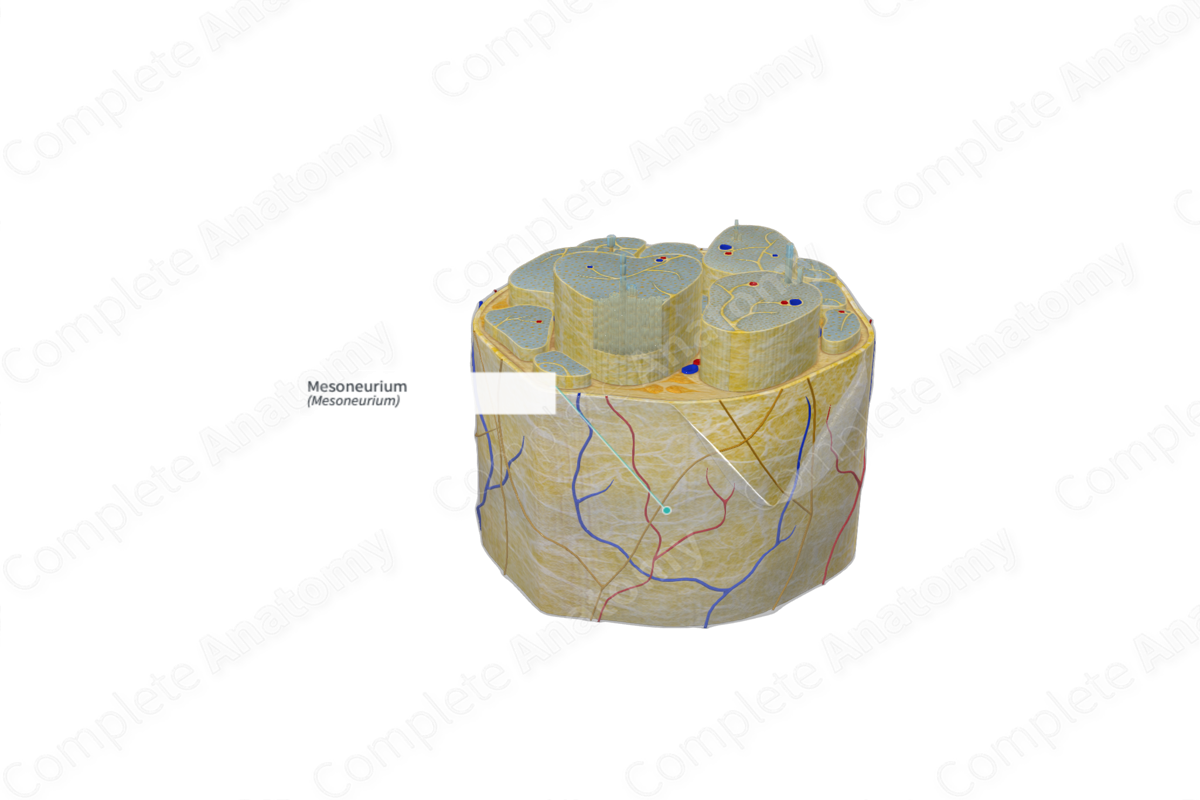
Quick Facts
The mesoneurium surrounds the nerve fiber tissue and helps suspend it within surround tissues.
Structure/Morphology
The mesoneurium is the outermost layer of peripheral nerves. It is formed by loose areolar connective tissue, consisting of collagen, elastic and reticular fibers, which are arranged around nerve in an unorganized manner (Carp, 2015).
Anatomical Relations
The mesoneurium wraps around the external epineurium. The mesoneurium is also the entry point for many of the blood vessels that supply the vasa nervorum, the intricate network of small blood vessels within the nerve trunk.
Function
The mesoneurium suspends nerves within the soft tissue and provides some protection from compressive and tensile forces impacting on the nerve trunk (Carp, 2015). The mesoneurium also enables nerves to glide past one another and other body tissues, limiting frictional forces. The mesoneurium can also be seen to facilitate sliding motions between the mesoneurium and the external epineurium facilitating extensibility of the nerve.
References
Carp, S. (2015) Peripheral Nerve Injury An Anatomical and Physiological Approach for Physical Therapy Intervention. EBL-Schweitzer: F. A. Davis Company.
